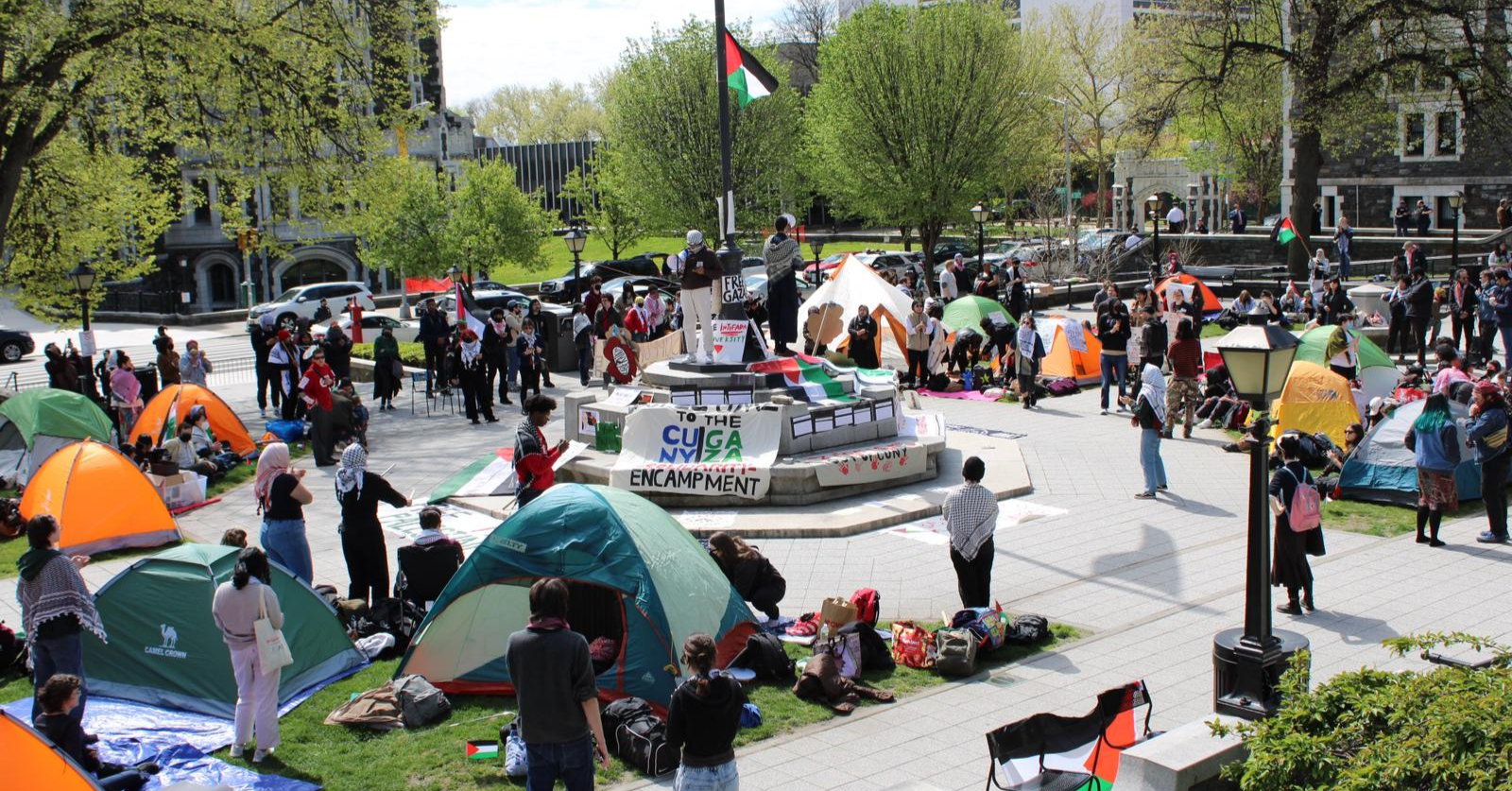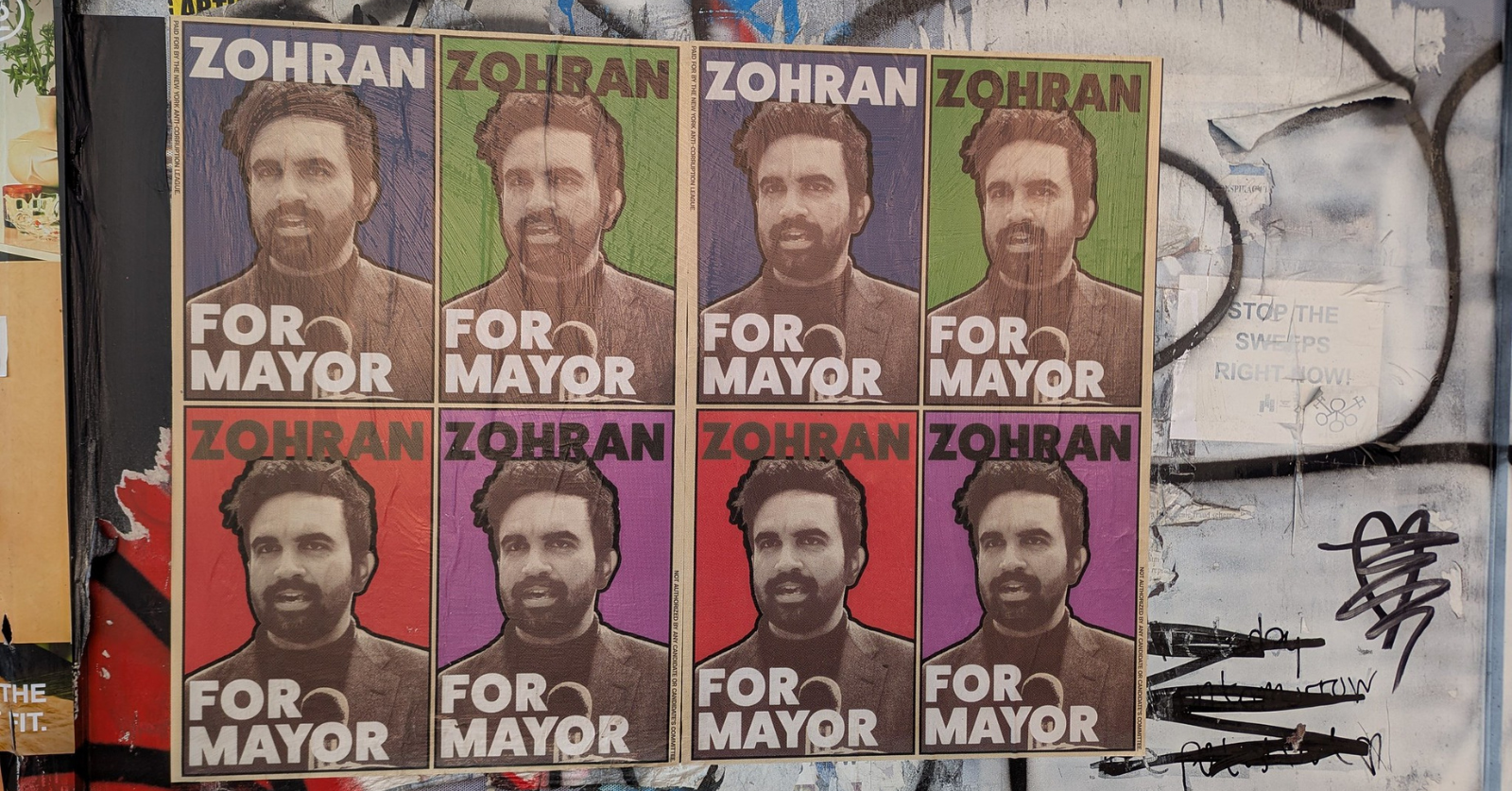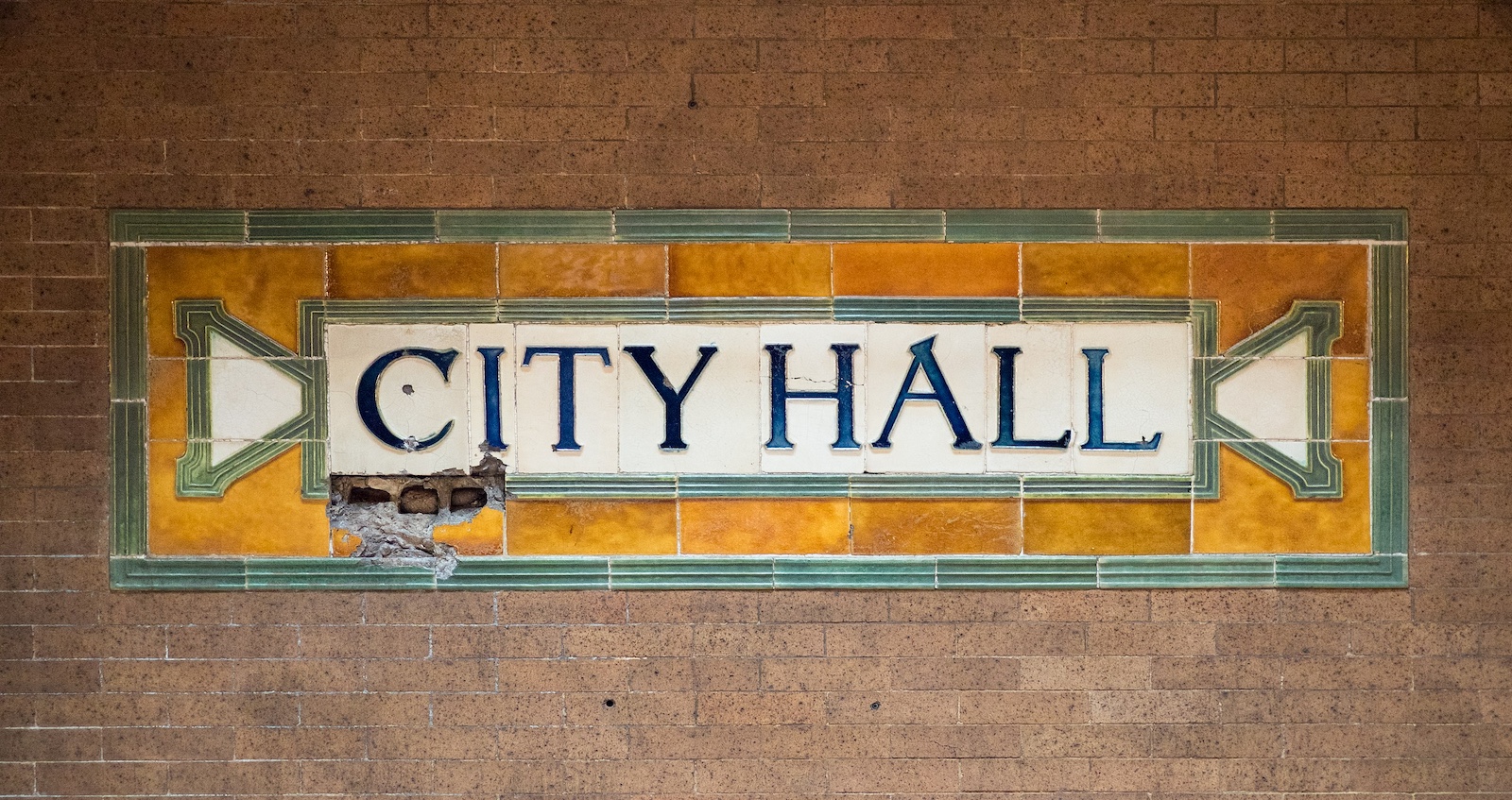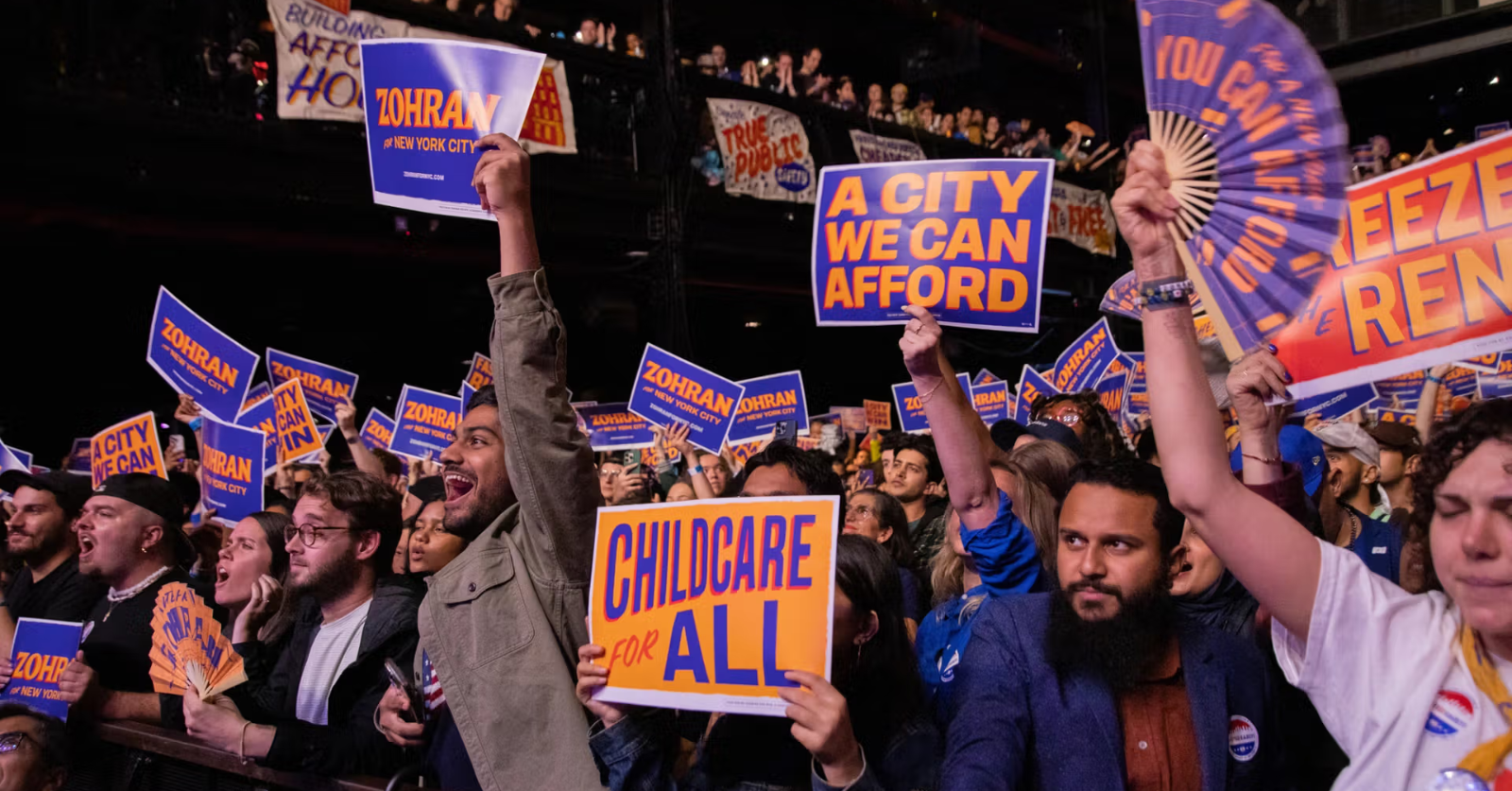In the aftermath of Columbia University’s crackdown on student free speech against Israel’s genocidal campaign in Gaza, an insurgent student movement calling on their universities to disclose their finances and divest from weapons manufacturers and other financial ties to Israel has spread across the country. The movement is already being likened to the antiwar movement and the Free Speech Movement of the 1960s. In many ways, it shares demands with both. An immediate humanitarian ceasefire in Gaza; a Palestine free of violence, oppression, and colonial rule; and the protection of free speech for the students and faculty at US universities as they make these urgent demands.
This is a pivotal moment for the struggle for Palestinian life and liberation in the US. It is important to be sober about what the situation is thus far, and what our tasks are for continuing to build it beyond a flash in the pan and into an organized movement that can win its demands. Here, I will try to do that, starting with an overview of my own experience participating in rallies at New York University and The New School as a community supporter, and ending with a suggestion for how socialists and labor activists can strengthen this movement for Gaza.
The Encampment at New York University
Encampments have begun at campuses from coast to coast, stretching from UC Berkeley to Yale and Columbia.
On Monday, I attended a rally to support the encampment started at NYU. That morning, a mass grave of over 300 bodies was found at Nasser hospital, Gaza’s primary health facility. According to Reuters, corpses were buried by the Israeli military with bulldozers. Evidence suggests that some were executed, tortured, or even buried alive.
It was in this context, in addition to the repression of student activism calling for a ceasefire and an end to the genocide of Palestinians in Gaza, that the rally was held. The event was organized by the NYU Palestine Solidarity Committee and the crowd was a mix of NYU students, organizers and activists, and community supporters.
Around 8 p.m., students gathered in rows before the encampment for prayer. They held hands in a line before laying down keffiyehs and sweaters and beginning worship. A few minutes into their quiet praying, the New York Police Department in riot gear swarmed the crowd from behind those kneeling in prayer. Large NYPD corrections buses pulled up behind us. Through loudspeakers, NYPD blared that we would be arrested and charged with trespassing if we did not disperse.
The rally was held at Gould Plaza in front of the Stern School of Business, which is open to the public. Only NYU students participated in the encampment itself by setting up tents.
Protestors hurried to meet the NYPD in order to protect the encampment, locking arms and raising our voices in chants. NYU faculty headed straight to the front to protect their own students in a moment of solidarity.
The protest was orderly, although chanting was loud, until the moment the NYPD arrived. Their presence was startling, causing many to begin to run in ways that could have turned dangerous. Of course, the NYPD was not there to protect the rally from danger — they were the danger.
The NYPD began attempting to make arrests, leading them to physically grab those linking arms at the front of the crowd to put them into zip-tie handcuffs. They shoved and pulled protestors, some older faculty and some young students, thrashing them around and yelling at them. The NYPD was out to create a mob.
In NYU’s statement on the protest, they write: “We witnessed disorderly, disruptive, and antagonizing behavior that has interfered with the safety and security of our community, and that demonstrated how quickly a demonstration can get out of control or people can get hurt.”
This was simply untrue. The “disorderly, disruptive, and antagonizing behavior” was students praying. The demonstration of how quickly a protest can get out of control was demonstrated by NYPD, the only trigger for any sense of chaos or disorder.
After the first arrests, protestors began to lead the crowd in a march down the street and attempted a sit-in to stop the NYPD Corrections buses. As the buses eventually sped off after most of the crowd dispersed, they narrowly missed stragglers. NYPD pepper sprayed protestors, including a legal observer from the National Lawyers Guild.
Over 300 protestors carried on to 1 Police Plaza for jail support, rallying as they awaited the release of 130 people. They were released early the following morning.
Using Our Power on Campus
The next day I visited a picket outside of The New School to protect the encampment that had formed inside the building. Graduate students at The New School, organized with UAW, staged a walkout in solidarity. The picket line also included the wall-to-wall undergraduate union, fighting for voluntary recognition from the university and currently awaiting a response from the National Labor Relations Board.
I made a video on the encampment featuring a young organizer, Emily, which you can watch here. In this video, Emily emphasizes the role of organized labor in the struggle for a free Palestine. “It has everything to do with labor, where our money goes as workers at this institution, what we get taxed on,” Emily said.
We often say that workers hold the lever to make society run. But few people, especially young people, have actually seen that lever pulled. Now is the time for us to think creatively about how to pull it.
The labor movement is still ultimately small and weak in the grand scheme of things, but the great thing about solidarity is that we are mighty when we stand together.
Earlier this week I talked about the potential for secondary boycotts and strategic identification of choke points in universities’ supply chains to bring universities to a total standstill.
This was a tactic employed by the Berkeley Free Speech Movement (FSM). Joel Geier writes:
Campus unions — the Building Trades, SEIU, the ILWU, and the San Francisco Labor Council — supported the strike. A contribution to shutting down the campus came from an unexpected force: the conservative Teamsters. I led a group of FSMers to meet with Teamster union officials, who agreed with us that crossing our picket lines would be scabbing, and they would prevent all deliveries to the campus. Within an hour, no trucks bringing supplies or food entered the campus, helping to halt the normal functioning of the university.
The solidarity of campus workers was outstanding, particularly the underground support from secretaries and clerks of the main university administrators, who acted as part of our intelligence network, providing us with the enemy’s thinking, plans, and memos.
Organized labor is at a weaker place today than it was in the 1960s, and political willingness to take a job-threatening stand for an unfortunately divisive issue is much lower. In most places and with most locals, it won’t be as simple as approaching them and asking them not to cross your picket line.
However, many local unions have passed their own resolutions calling for a ceasefire, and a smaller number are making statements of support with the student campers specifically. Everyone’s local conditions will be different, and the key is to understand and work with yours.
On some campuses, university faculty have begun to take a stand. Faculty members at UT Austin put out a statement calling for a faculty walkout and work stoppage, pausing classes, grading, and all other academic work.
Bus drivers in New York City organized with TWU Local 100 refused to transport protestors to the police precinct after they were arrested at the Jewish Voice for Peace “Seder in the Streets” on Tuesday night.
Student organizers at The New School commented that while police had harassed protestors outside of their building for the first two days of the encampment, once they formed a picket line and held up signs reading “UAW for Palestine” and “Unions Against War”, the police left them alone.
On several college campuses, union groundskeepers have been forced by their university employers to sweep encampments. However, especially at universities where existing networks of student support for their local unions exist (occasionally through campus organizations and clubs), we should not take this for granted. If you are a student protestor with a friendly local union representing campus groundskeepers, consider reaching out to them for a meeting to discuss ways for them to support your camp. If you are a union member, talk to your coworkers, your shop steward, and your union rep if you can.
An Injury to One
The students’ movement for a ceasefire in Gaza, divestment from Israeli apartheid, and freedom of speech on campuses is a historic effort to bring about a more just world. University divestment can and has been won before — from South African apartheid in the 1980s, and, in more recent years, from fossil fuels. The demand for divestment can pull financial support from the manufacturers of genocide, while also putting pressure on the federal government and the international community for an immediate ceasefire.
The students’ movement extends beyond the campus, especially as students call on their local communities to provide support and show up at their rallies. Sheer numbers can help prevent arrests and peacefully resist the violence of police; if we had more community supporters protecting the encampment at NYU from all sides, perhaps the NYPD would not have been able to ambush the encampment from behind.
Even if you are not a student, you have a role to play — doubly so if you are a union member near one of these campuses. We have the chance to both flex the muscles of organized labor to win our demands, and at the same time show an entire generation of young activists what it looks like when labor stands together in solidarity. Teaming up with organized labor can increase our power to win our demands.




